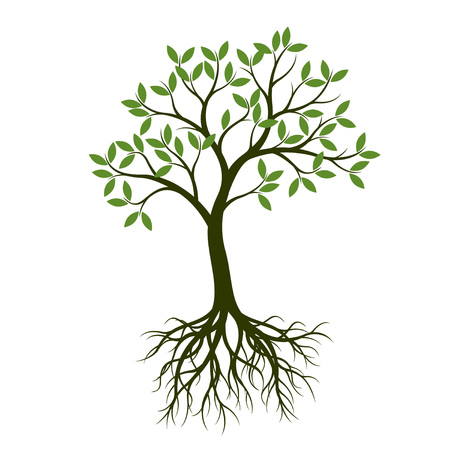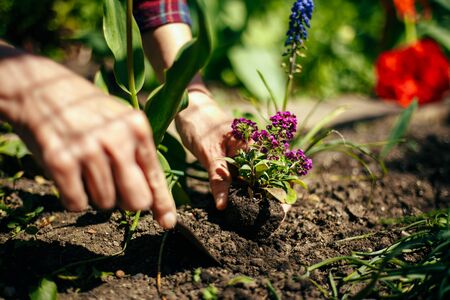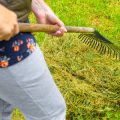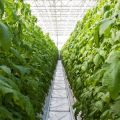Introduction to Local Soil Types
When it comes to landscaping and gardening in the United States, one of the most important factors often overlooked is the soil beneath our feet. Across America, soil types vary greatly from region to region—ranging from the rich, dark loam of the Midwest, to the sandy soils along coastal areas, and the clay-heavy earth found in southern states. Understanding these local soil characteristics is essential for anyone hoping to create a thriving landscape with native plants. Each type of soil affects water drainage, root development, and nutrient availability in different ways. If you want your native plants to truly flourish, getting familiar with your local soil is step one. By knowing what’s in your yard, you can select plants that are naturally suited to thrive in those conditions or take steps to amend your soil for better results. In this article, we’ll explore how understanding your unique local soil leads to more successful—and sustainable—landscaping solutions.
2. How Soil Composition Influences Native Plant Growth
Understanding your local soil is like getting to know the foundation of your home garden. Each patch of earth has its own personality, shaped by unique combinations of minerals, organic matter, and environmental conditions. Key soil properties—such as pH, texture, and drainage—play a significant role in determining which native plants will thrive in your landscape.
Soil pH: The Balancing Act
The pH level of your soil measures how acidic or alkaline it is. Most native plants have adapted to the typical pH ranges found in their local habitats. For example, many Midwest prairie species prefer neutral to slightly alkaline soils, while Pacific Northwest natives often do best in more acidic conditions. If your soils pH falls outside a plant’s comfort zone, it can affect nutrient uptake and stunt growth.
Common Soil pH Preferences for U.S. Native Plants
| Region | Typical Native Plant pH Preference | Example Species |
|---|---|---|
| Northeast | 5.0–6.5 (acidic) | Blueberry, Mountain Laurel |
| Southeast | 5.0–6.5 (acidic) | Azalea, Sweetbay Magnolia |
| Midwest | 6.0–7.5 (neutral–alkaline) | Purple Coneflower, Little Bluestem |
| Southwest | 7.0–8.0 (alkaline) | Sagebrush, Yucca |
| Pacific Northwest | 5.0–6.0 (acidic) | Salal, Red Huckleberry |
Soil Texture: The Feel Under Your Fingertips
The texture of soil refers to its proportions of sand, silt, and clay. This characteristic affects how well soil holds water and nutrients—two essentials for healthy plants. Sandy soils drain quickly but may not hold onto nutrients long enough for roots to absorb them. Clay soils retain moisture and nutrients but can suffocate roots if they become waterlogged. Many U.S. native plants are specifically adapted to the textures common in their home regions.
Drainage: Keeping Roots Happy
Poor drainage can be a silent killer for native plants that are used to well-drained soils, especially after heavy rain or snowmelt common in certain U.S. climates. When soil drains poorly, roots are deprived of oxygen, leading to rot and disease. On the flip side, some wetland natives thrive in moist or even saturated soils—think Cattails or Marsh Marigold.
Quick Reference: Matching Soil Properties with Native Plant Needs
| Soil Property | Description | Plant Examples That Prefer This Condition |
|---|---|---|
| Sandy & Well-Drained | Loses moisture quickly; low fertility; warms up fast in spring | Lupine, Butterfly Weed (Eastern U.S.) |
| Clayey & Moisture-Holding | Keeps water longer; rich in nutrients; slow to warm up | Swamp Milkweed, River Birch (Central/Eastern U.S.) |
| Silty & Fertile | Smooth texture; holds water and nutrients well; prone to compaction | Culvers Root, Joe-Pye Weed (Midwest/East) |
| Poorly Drained/Seasonally Wet | Saturated during rainy seasons or near wetlands/streams | Cattail, Marsh Marigold (Wetlands nationwide) |
The interplay between these basic soil properties shapes the success—or struggle—of every native plant you add to your landscape. Taking time to learn about your own yard’s soil can set you up for a thriving garden filled with healthy native beauty.

3. Benefits of Planting Native Species in Local Soils
One of the most significant advantages of choosing native plants for your landscaping projects is how well they adapt to local soils. Native species have evolved over thousands of years to thrive in the unique conditions present in their home regions, including specific soil types, moisture levels, and seasonal weather patterns. This natural adaptation brings several practical benefits for American gardeners and homeowners.
Resilience to Pests and Diseases
Because native plants are part of the local ecosystem, theyve developed natural defenses against common pests and diseases found in their area. This means youre far less likely to encounter severe infestations or plant illnesses when you use natives compared to exotic species that may lack these built-in protections. As a result, you can often avoid heavy pesticide use, creating a healthier environment for your family and community.
Support for Local Wildlife
Landscaping with native plants also supports local wildlife, such as pollinators (like bees and butterflies), birds, and beneficial insects. These creatures depend on native flora for food, shelter, and nesting sites. When you plant natives in your yard or garden, you’re helping preserve vital habitats that sustain healthy ecosystems right in your neighborhood.
Reduced Maintenance Needs
Native plants are naturally suited to the soil conditions where they evolved—whether thats sandy coastal ground, rich woodland loam, or dry prairie earth. Because theyre already equipped to handle local weather and soil chemistry, they typically require less watering, fertilizing, and overall care than non-native species. This translates into less time spent on yard work and lower long-term costs for things like irrigation and fertilizers.
A Sustainable Solution for Home Landscapes
By selecting native plants that match your regions soil profile, you’re investing in a landscape that’s both beautiful and sustainable. Not only do these choices make gardening easier, but they also foster a thriving outdoor environment—one that reflects the natural beauty of your local area while conserving resources and supporting biodiversity.
4. Assessing Your Soil: Practical Tools and Methods
If you want to set your native plants up for success, understanding your yard’s soil is a must. Fortunately, checking your soil doesn’t require a science degree or expensive lab work—there are user-friendly ways to get real answers, right at home or in your local community.
Easy At-Home Soil Testing Kits
Most garden centers and hardware stores offer affordable soil testing kits designed for homeowners. These kits typically check pH levels and the presence of key nutrients like nitrogen, phosphorus, and potassium. Just follow the instructions—usually scooping some soil into a test container and adding water or a special solution. You’ll get results in minutes, giving you a snapshot of what’s happening underground. Remember: proper sampling means collecting soil from several spots in your yard for the most accurate picture.
Leveraging Local Extension Offices
Your county’s cooperative extension office is an amazing resource. Many offer detailed soil testing services where you mail or drop off a sample. They’ll provide a comprehensive report showing not just pH and nutrients, but also organic matter content and recommendations specific to native plants in your area. Plus, staff can answer questions about local soil quirks and how they impact landscaping choices.
Comparing Soil Assessment Options
| Method | What It Tests | Cost | Turnaround Time | Best For |
|---|---|---|---|---|
| At-Home Kits | pH, N-P-K (nutrients) | $10-$25 | Minutes | Quick checks, beginners |
| Extension Office Lab Test | pH, nutrients, organic matter, texture | $15-$40 | 1-2 weeks | Detailed analysis, tailored advice |
| Community Events/Workshops | Varies (often pH & basics) | Free/Low-cost | Same day or scheduled return | Learning with neighbors, group support |
Tapping Into Community Resources
Check for local gardening clubs or neighborhood workshops that occasionally host free or low-cost soil testing days. Not only do you get your soil checked, but you also connect with fellow plant lovers who can share their own experiences with native species in similar soils.
A Friendly Reminder:
No single test tells the whole story! Soil health changes over time with weather, planting, and amendments. Consider retesting every few years—or before starting new landscaping projects—to keep your native garden thriving.
5. Landscaping Solutions for Challenging Soils
If your local soil seems less than ideal for growing native plants, don’t worry—there are practical landscaping solutions that can help you create a thriving garden. Many American gardeners face challenges like clay-heavy soils, sandy patches, or rocky ground, but with some thoughtful adjustments, it’s possible to nurture a beautiful and resilient landscape right in your backyard.
Amending Your Soil with Compost
One of the most effective ways to improve difficult soils is by amending them with compost. Compost helps break up heavy clay, adds structure to sandy soils, and enriches poor ground with essential nutrients and beneficial microbes. Simply spread a layer of well-aged compost over your planting area and gently mix it into the top several inches of soil. Over time, this practice boosts soil health and supports stronger native plant growth.
Creating Raised Beds
If amending the existing soil isn’t enough or if drainage remains a problem, raised beds are a popular solution across many U.S. regions. Raised beds allow you to control the quality and texture of your soil by filling them with a custom blend suited to your chosen native plants. They also make gardening more accessible and can help prevent issues like waterlogging or compacted roots.
Choosing the Right Native Plants
Selecting native plants that naturally thrive in your specific soil type is another smart approach. For example, many prairie natives are adapted to heavy clay, while others, like some wildflowers and grasses, do well in sandy or rocky conditions. Consult with your local extension office or native plant society to discover which species are best suited for your yard’s unique soil profile.
Practical Tips for Success
- Test your soil first so you know what you’re working with.
- Mulch around plants to retain moisture and reduce weeds.
- Water deeply but less frequently to encourage deep root systems.
Embracing Your Local Landscape
No matter what kind of soil you have, there’s a way to work with nature rather than against it. By amending soils when needed, building raised beds for extra control, and choosing the right native species, you can enjoy a sustainable garden that reflects the natural beauty of your region—and supports local wildlife too.
6. Real-Life Success Stories
Across the United States, families and gardeners are discovering the power of working with their local soil rather than against it. In Portland, Oregon, the Johnson family transformed their clay-heavy backyard into a thriving native meadow by choosing species like camas and Oregon grape that naturally flourish in dense soils. Over in Austin, Texas, community gardener Maria Lopez saw her rocky garden beds come to life after planting native Texas sage and blackfoot daisy—plants perfectly adapted to dry, well-draining ground. Meanwhile, in suburban New Jersey, the Lee family swapped water-thirsty grass for clusters of eastern red columbine and blue wild indigo, which thrived in their acidic, sandy soil. These stories show that when you match native plants to your unique soil conditions, you not only create beautiful landscapes but also reduce maintenance and support local wildlife. Whether it’s a backyard, a front lawn, or a shared community space, American gardeners are finding success by letting nature lead the way.
7. Getting Started: Steps for Your Family Garden
Transforming your yard into a thriving, native landscape starts with understanding and working with your local soil. Here are some simple, family-friendly steps to help you embrace native plants and create a healthy, sustainable garden that supports your local ecosystem.
Step 1: Get to Know Your Soil
Start by taking a walk around your yard with your family. Dig a small hole in different spots and observe the texture, color, and moisture of the soil. Is it sandy, clay-like, or loamy? Knowing this will help you choose the right native plants that will thrive without heavy amendments.
Step 2: Test Your Soil
You can purchase an easy-to-use soil test kit at your local garden center or county extension office. Testing for pH and nutrient levels gives you a clearer picture of what your soil needs—and what it already does well!
Step 3: Choose the Right Native Plants
Visit a nearby native plant nursery or check with your state’s extension service for lists of plants naturally suited to your area’s conditions. Involve kids in picking out flowers or shrubs they like—this helps everyone feel connected to the project.
Step 4: Prep Your Site—The Easy Way
Clear away weeds and invasive species gently, trying not to disturb the soil more than necessary. If possible, keep existing leaves and mulch on the ground to protect beneficial organisms in your local soil.
Step 5: Plant & Mulch Together
Dig holes just deep enough for each plant’s roots and space them according to their mature size. Add a layer of natural mulch (like wood chips or fallen leaves) around the plants to help retain moisture and support soil health.
Step 6: Water Wisely
Native plants typically need less water once established. Teach kids how to check soil moisture before watering—if it feels damp, hold off. This helps conserve water and encourages deep root growth.
Step 7: Watch & Learn as a Family
Spend time outside observing how your new native garden changes through the seasons. Keep a journal together of which plants attract butterflies or birds. Celebrate small successes and make notes for next year’s improvements.
By starting with these manageable steps, your family can turn local soil quirks into strengths—creating a beautiful, resilient landscape that’s uniquely yours while supporting native wildlife and conserving resources.


